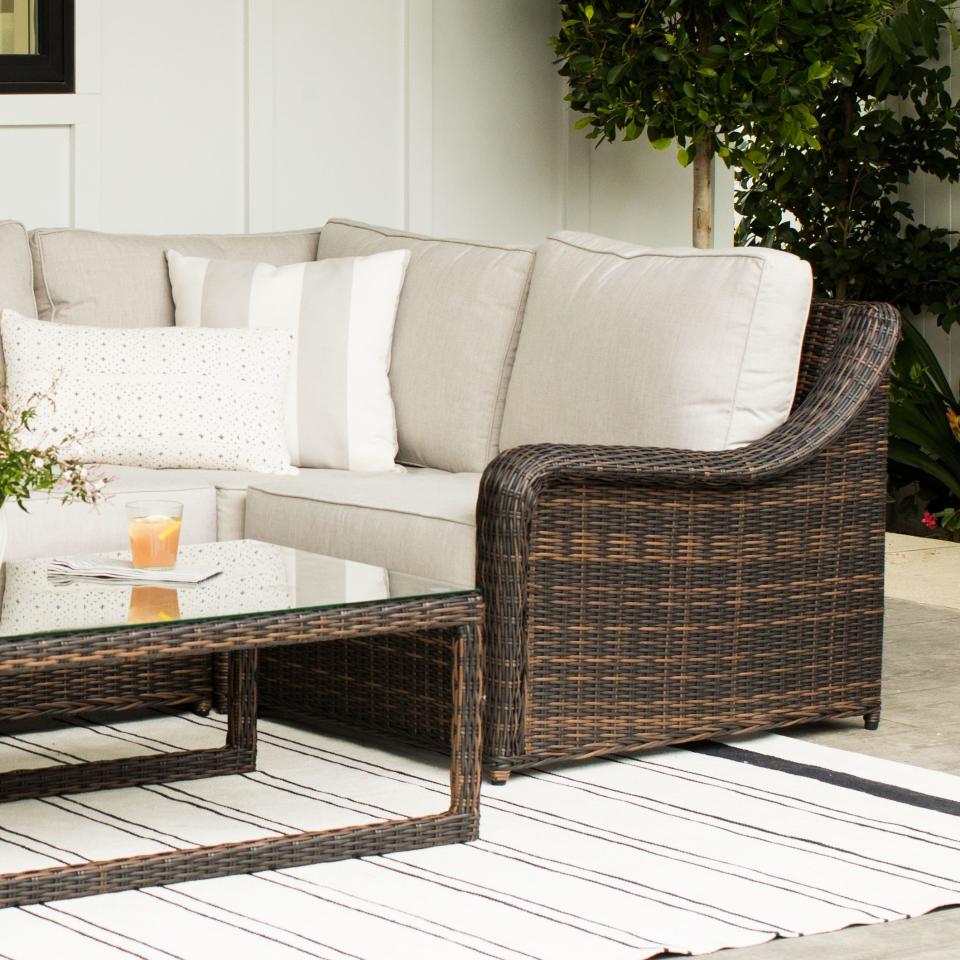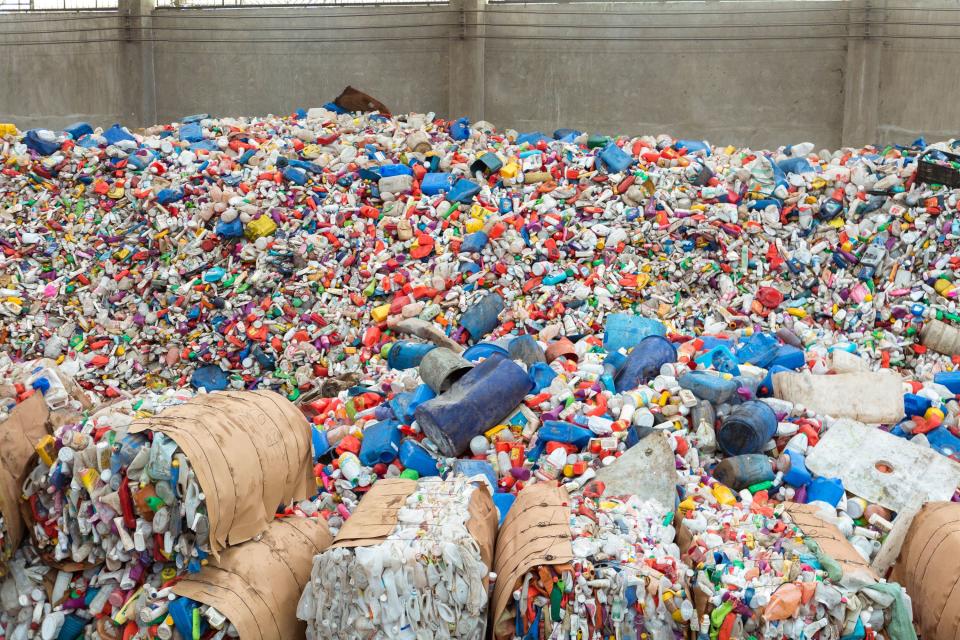You're Paying Too Much for Outdoor Furniture
Shopping for an outdoor furniture set is one of the biggest buzzkills ever. First, you're extremely hopeful: It's spring, I can finally sit outside, let's whip the patio into shape, etc. But that fades fast, as you realize quality outdoor furniture is pricey. Shockingly so! Jay Dillon felt precisely this way when he and his wife went to furnish a friend's patio one summer (yes, a friend's—the deal was that they got to use their beach house for a spell if they found and purchased a perfect outdoor furniture set before leaving) and couldn't justify buying any nice ones due to the price. That's when the idea for a new company was born, but it would be years before Jay (and his entrepreneur dad, Bob) launched the product: Yardbird, a direct-to-consumer outdoor furniture line that uses recycled ocean plastic to build affordable, high-quality pieces for your patio.
“The idea of Yardbird began when we... realized the price disparity in the outdoor furniture industry,” says Jay. Cue the Warby Parker solution: Cut out the middleman and cut down the prices. But before any manufacturing deals were signed, Jay had to do his research. So in 2015, he quit his New York City job and moved to Hong Kong, hotbed of the weaving industry, to "study in the factories, build relationships with suppliers, and truly understand quality control." Over time, two things stood out: the incredible amount of virgin plastics being used to manufacture outdoor furniture, and the incredible amount of plastic debris on the local beaches. At a swimming beach Hong Kong Island, Jay noticed a giant net in place in the water to keep trash out of the swimming area, and remembers taking weekend trips with his wife to beaches in the Phillipines and Indonesia without nets, where plastic was everywhere.

"After researching the issue, I learned that five Asian countries (Vietnam, Philippines, Indonesia, Thailand and China) contribute more than 60 percent of the garbage to the oceans," he says. "The opportunity to support conservation efforts with Yardbird’s mission was obvious." A facility in Manila helped him purchase large amounts of intercepted ocean plastics from collectors and then process them for use, which involves label-stripping, chopping, washing, pelletizing, and then dyeing the pieces so they're ready to be turned into furniture. (They heat the plastic as little as possible during this process, in order to minimize the pollutants put off, and then cool them immediately in a water bath.) "As a result, Yardbird has collected and incorporated over 30,000 pounds of intercepted ocean plastic in its 2018 collection," says Jay, "with 50 percent of every handmade resin wicker set made of this recycled material." Using these recycled materials doesn't negatively effect quality or durability, Jay says, and the cost of all this collecting/processing is about the same as what they'd spend on virgin plastic. So it's a win for the consumer, primarily.

Before formally launching this spring, Jay and his dad gave it all a test drive by opening a pop-up in Minneapolis—their hometown. (They self-financed for the first year and worked with factories to extend payment terms to make the pop-up possible.) Within four weeks, they sold out of $1 million of inventory. From there they raised capital and started making more furniture, not just of plastic resin wicker but also rust-proof aluminum, some even finished to look like lightly weathered teak. Plus, every Yardbird furnishing is 100% recyclable.

